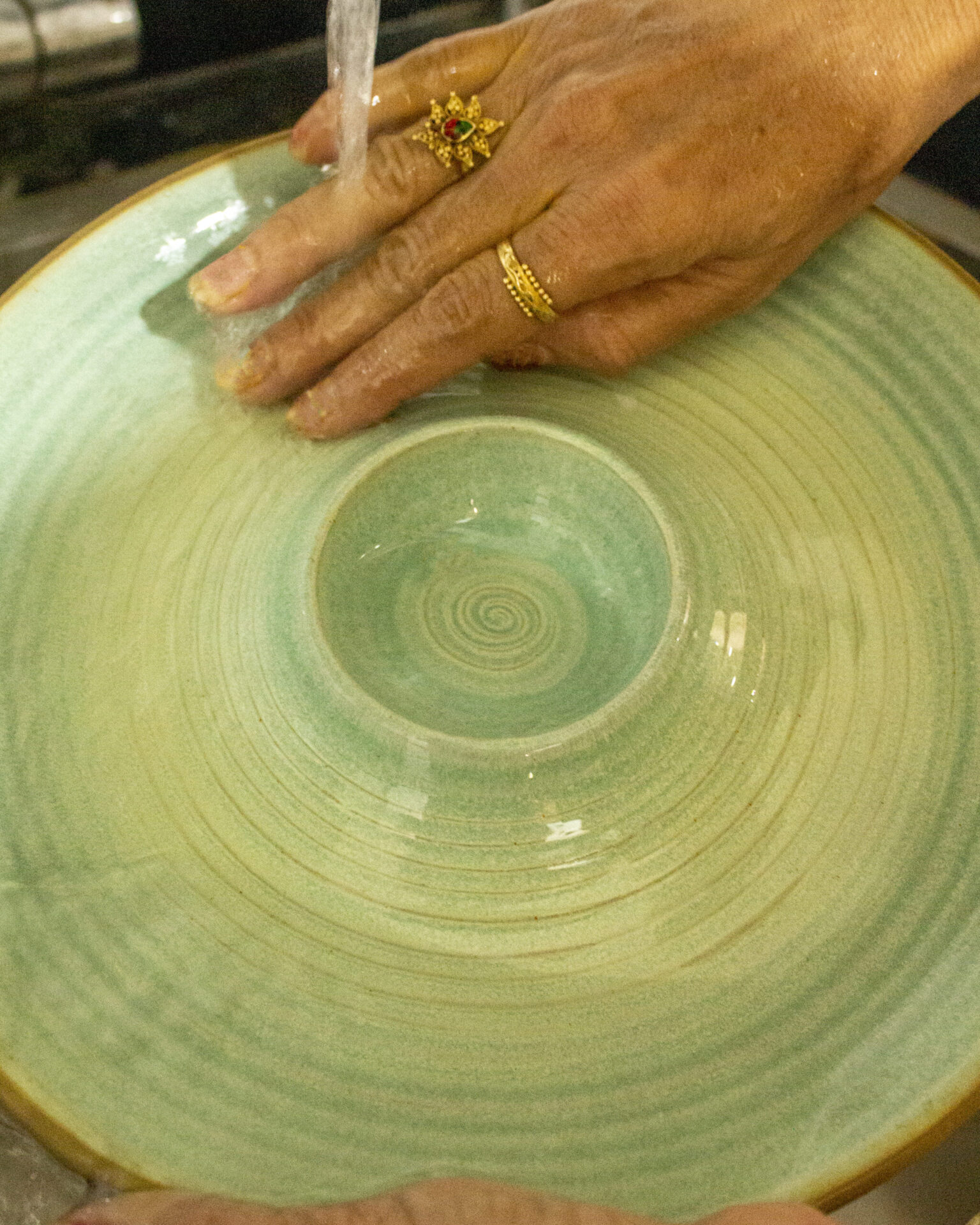
- The most crucial component of stoneware maintenance and upkeep is to make sure it is at ambient temperature. Thermal shock can occur as a result of abrupt changes in temperature, causing your stoneware to crack and chip.
- When it comes to soap, stay away from citrus juices and citrus-based cleaners, as they will destroy the outer gloss. Additionally, avoid using scratchy metal pads or cutlery. Instead, use nylon pads to clean it.
- If you want to season your stoneware for better flavor when cooking, all you have to do is wash it in hot water with no soap. This allows the oils baked on the stoneware to build up and form a coating that protects the stoneware and makes it easier to clear off food with each usage. This seasoning method is just a natural way to generate corrosion- and stick-resistant coating.
- Yes, stoneware can be used in the oven, but great care must be used when handling it. It’s totally safe to use for cooking, although fast temperature swings should be avoided. At the same time, this does not imply that the item should be preheated.
- It’s better not to preheat empty stoneware in the oven because it will most likely fracture or break. Simply make sure it’s at room temperature and that the oven has finished preheating before placing it in the oven.
- If your piece is not glazed, it should only be hand-washed. However, some glazed stoneware is dishwasher safe. You simply need to follow any instructions that come with it.
- As previously said, ensure your stoneware has cooled to room temperature before putting it in the dishwasher.
- It’s advisable to avoid using it in the microwave unless it’s clearly labelled as such. Glazed stoneware has paint that may contain trace amounts of metals or chemicals that capture microwave radiation and lead to damage.
- If your stoneware states that it can be microwaved, keep thermal shock in mind. Make sure not to overstress your work by alternating between drastic temperature fluctuations too soon.
Material - Technique - Crafter

Only clay is used in pottery. Clay and other minerals can, however, be added to ceramics to strengthen them. Since clay is the only ingredient in pottery, it is porous and not watertight; and is ideal for intricate engraving too.
Since antiquity, cultures all across the world—from ancient Greece to the Ashanti Empire and mediaeval Japan—have valued pottery for this reason. Earthenware was followed by stoneware. Compared to earthenware, it needs greater firing temperatures. In contrast to porcelain, which is nearly usually white, artists can create stoneware using a variety of clay hues. For a truly distinctive twist, we even mix several clay colors into some of our stoneware.
Stoneware is a robust, hard, and impermeable material. It can be used as a baking dish or a personalized prize. It is strong, stylish, and adaptable. It can withstand the heat from a microwave, dishwasher, or even an oven. Stoneware is ideal for sipping coffee or tea because it absorbs and distributes heat more evenly than other varieties of pottery.

